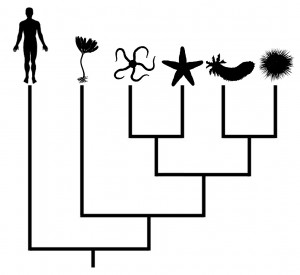Anyway, New Scientist seems to have fallen for this in their interpretation of a recent paper.
Bellyflopping frogs shed light on evolutionThe authors of the paper state several times that these frogs retain the ancestral swimming style. Presumably this is backed up with clear evidence in the fossil record, and not just position on the reconstructed phylogeny. Otherwise, there is an obvious alternative interpretation: the swimming mode in leiopelmatids is derived and results in a reduced leaping ability.
Playing leapfrog would be tricky for the most primitive living frogs: those from the Leiopelmatidae family crash-land rather than touch down gracefully after leaping. The finding may reveal how frog jumping evolved.
Richard Essner of Southern Illinois University in Edwardsville suspected unusual jumping behaviours in leiopelmatids because they are known to swim differently from other frogs, using a "trotting" movement rather than a synchronous double kick.
Essner's team used high-speed video to compare jumping in three leiopelmatid species with two more-evolved species. Whereas the more advanced species begin to fold up their hind-limbs in mid-air to prepare for landing and their next leap, "Leiopelmatid frogs don't fold up their legs until after they've hit the ground," he says.
Ascaphus montanus, the most primitive species, kept its legs splayed as it landed in a belly flop or nosedive, then skidded to a halt on its belly. Perhaps it's no surprise that frogs evolved to jump before they could master landing.
Given that they are mostly aquatic and have other derived adaptations to life in fast-running streams, this is not at all implausible. Again, these are all modern species that have been evolving for exactly the same amount of time since their split from a common ancestor.
UPDATE: Evolutionary concepts are often superficially simple but in fact very difficult to grasp correctly. This story shows how this extends to both researchers and science writers and, presumably, their readers. New Scientist, Scientific American, Discoblog (Discover), Ed Yong (Discover), the journal (Naturwissenschaften), and the study authors all appear to be confused to some extent about what "primitive" means and how one establishes ancestral vs. derived characteristics.
Here's an example from my paper on evolutionary trees. Which is more "primitive", "early branching", "least evolved", or what have you? Can you conclude anything about the ancestor of echinoderms and chordates by comparing modern humans vs. modern echinoderms and assuming the early branching lineage is primitive?





Comments